Asbestos Removal London Greater London (SW1): Asbestos, a mineral consisting of millions of extremely tiny fibres, holds the distinction of being one of the most hazardous and terrifying materials ever discovered within our homes due to its capacity to become airborne.
The association between asbestos dust exposure and a range of potentially lethal lung conditions is familiar to many individuals residing in London. Therefore, the proper removal of asbestos-containing materials (ACMs) is essential to prevent the contamination of the surrounding area and to reduce unnecessary exposure for those nearby. This underscores the necessity for highly skilled asbestos removal procedures.
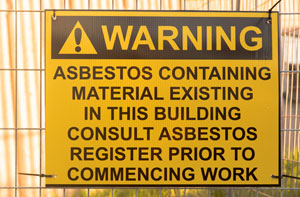
Inhalation of the fibres can result in numerous health issues, many of which are ultimately fatal, emphasizing the grave nature of the consequences. When individuals are exposed to a high concentration of airborne asbestos removal, the risk of developing cancer or other associated conditions significantly increases.
When engaged in asbestos removal, it is important to bear in mind that the health effects are exclusively linked to the inhalation of dust. Therefore, it is essential to eliminate any activities that generate dust. An exemplification of this is the use of power tools on ACMs.
At times, in the absence of disturbance, asbestos will not cause any harm to you or your loved ones. Nevertheless, if you do have asbestos, it is important to take immediate action for its removal.
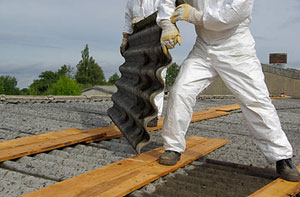
If there is asbestos anywhere in your home or if you suspect its presence, it is important to seek the assistance of an experienced asbestos removal company. Although asbestos in good condition poses minimal risk, its deterioration and conversion into dust can have fatal consequences. London witnessed widespread usage of asbestos for home insulation until the mid-1980s, suggesting that a considerable number of homes potentially contain this hazardous substance. Asbestos was employed in various applications, including insulation, floor tiles, and other building materials.
When selecting an asbestos removal specialist in London, it is essential to be assured that the removal will be conducted in a way that eliminates or reduces the creation of dust. While asbestos removal activities are subject to regulation in various jurisdictions, if you happen to be in an area without such regulations or if you are planning to undertake the removal yourself, the following 10 points can offer valuable assistance:
- After completing the removal process, it is essential to carry out a comprehensive cleaning and decontamination of the removal area. This will entail using either an appropriate vacuum cleaner (equipped with a High Efficiency Particulate Air filter - domestic vacuum cleaners should never be used) or damp rags to wipe away any dust.
- Proper disposal of ACMs requires wrapping them in plastic and ensuring appropriate disposal methods are followed after removal. Disposal laws for ACMs are in place in many jurisdictions.
- Don't allow others in the vicinity or the asbestos removal area.
- The objective when removing the ACM is to minimize damage, so it is advisable to employ a method that causes the least amount of harm (e.g. try to remove asbestos cement sheeting in complete sheets).
- As previously stated, it is crucial to refrain from using power tools. Grinding asbestos cement sheets has been identified as a process that results in extremely high levels of asbestos-containing dust.
- During the removal process, if safe and possible, it is recommended to wet down ACM.
- ACMs without a bonded matrix, specifically pipe work lagging/insulation, present a considerably higher risk. Consequently, removal work associated with these unbonded ACMs is typically conducted within plastic enclosures customized for the purpose.
- ACMs in which the asbestos is tightly bound within a bonding matrix present a lower risk during removal as it more difficult to create asbestos dusts (e.g. asbestos cement products or vinyl floor tiles).
- All surfaces that have the potential to be contaminated should be covered with plastic sheeting.
- Wearing the correct personal protective equipment is crucial, and it should encompass, at the very least, a particulate respirator and protective coveralls.
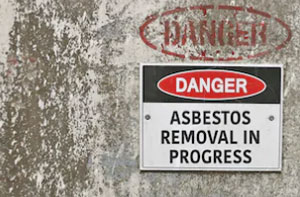
Complying with the health and safety regulations in your local area is an absolute requirement.
If you have taken part in asbestos removal at your home by yourself, it is crucial to handle the disposal of asbestos waste separately from your household waste. Arrange for its collection by a hazardous waste carrier or, in the context of asbestos removal, contact an asbestos consultant in London.
Never gamble with your life or the lives of others. It may be tempting to assume otherwise because the effects of asbestos are not immediately apparent. However, this does not diminish its lethal nature. In fact, asbestos can result in outcomes far worse than immediate death or injury, as it can inflict long-lasting and agonizing consequences. Therefore, if you suspect the need for asbestos removal, ensure you hire professionals who possess the necessary expertise. Consider hiring asbestos specialists in London.
Diseases Caused by Asbestos
Examples of common diseases caused by asbestos exposure include:
- Stomach Cancer
- Lung Cancer
- Colon Cancer
- Asbestosis
- Mesothelioma
When asbestos fibres cause scarring in the lungs, it results in asbestosis, characterized by a notable decrease in their efficiency.
Mesothelioma, an exceptionally uncommon and typically fatal cancer, primarily occurs in individuals with a history of asbestos exposure.
Types of Asbestos
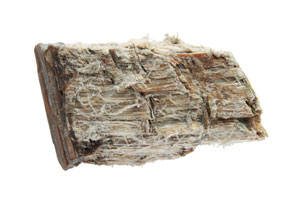
Popular in both the construction and manufacturing industries from the late 19th century until it was banned altogether in the United Kingdom in 1999, asbestos is a fibrous material that occurs naturally on every continent of the world. There are 6 specific minerals which are typically classed as asbestos, namely - amosite, chrysotile, crocidolite, anthophyllite, tremolite and actinolite, and these all belong to the two groups amphibole and serpentine.
For the purpose of this short article we'll just be considering the three primary types that are most widely found in British homes and buildings. Those are: chrysotile, amosite and crocidolite.
Chrysotile (White Asbestos) - Also called white asbestos, chrysotile asbestos was the most commonly used form of this dangerous material. It was used in the manufacture of boiler seals, brake linings, duct & pipe insulation and gaskets, and in the insulation, roofs, walls, ceilings and floors of many London homes and businesses. It is part of the Serpentine family of silicate minerals.
Amosite (Grunerite or Brown Asbestos) - Also called brown asbestos, amosite asbestos or grunerite is frequently found in insulating board, roofing materials, fire protection, cement sheets, vinyl tiles and pipe insulation. The 2nd most dangerous form of asbestos was primarily mined in South Africa and is a part of the Amphibole family.
Crocidolite (Blue Asbestos) - Crocidolite (blue asbestos), is regarded as the most dangerous type of asbestos. It's often found in plastics, pipe lagging, cement products and spray-on coatings, and was widely used for insulating steam engines.
Interesting Fact: In the 50s smokers were unwittingly breathing this stuff straight into their lungs, because scarily, asbestos was even used in the manufacture of cigarette filters. The thing that makes it even more improbable is that it was advertised as a health benefit at that time! Yes, blunder of the century have to go to the US based Lorillard Tobacco Company, who put the most deadly type of asbestos fibres (crocidolite) into their Kent Micronite cigarette filters. The unfortunate victims of this scandal are still making multi-million dollar compensation claims even today. Many of the claimants were affected by an aggressive and rare form of cancer called mesothelioma.
Asbestos Surveys London
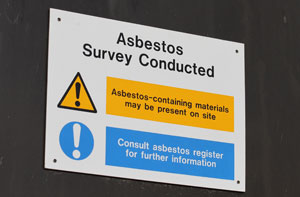
Asbestos of some kind or other is frequently found in properties built in London in the period 1850 to 1999. Widely used because of its chemical and heat resistant qualities, it was for many years a favoured building material. Identified in the 1970s and 1980s as a primary cause of various health issues, such as mesothelioma, atelectasis, lung cancer, kidney cancer, laryngeal cancer and asbestosis, it was removed from many buildings.
Such concerns triggered a total ban on asbestos in British buildings in 1999, after blue and brown asbestos were first banned in 1985. Of course asbestos materials remain in many buildings that were erected prior to 1999, and because of this asbestos surveys are necessary in many scenarios, even now.
There are essentially two kinds of asbestos survey that can be done on buildings in London.
- Asbestos Management Surveys (formerly Type 2)
- Asbestos Refurbishment/Demolition Surveys (formerly Type 3)
Asbestos Management Surveys London: An Asbestos Management Survey is carried out on occupied buildings in London, to establish the asbestos containing materials that exist, and to make sure they are not disturbed or damaged during routine maintenance or normal daily activities. Asbestos containing materials when undisturbed and in sound condition are not dangerous to occupants. However, when they're disturbed, damaged or in substandard condition minute asbestos fibres can be discharged, causing potential risk. For all non-domestic buildings or shared areas of domestic buildings in London which were built prior to the year 2000, these surveys are essential.
Asbestos Refurbishment/Demolition Surveys London: The requirement for an Asbestos Refurbishment/Demolition Survey occurs (as the name implies) when a building or structure in London is being restored or demolished. Most often ARD surveys are undertaken on buildings which are unoccupied or vacant, because a substantial amount of damage can result from this sort of survey. Where upgrading, demolition or refurbishment is planned an Asbestos Refurbishment/Demolition Survey must be performed before any work begins. This will find any asbestos containing materials that are present in the building's structure and determine how such materials can be safely managed or removed. Organising such surveys is down to occupants, professionals and management agents involved in these renovations, regardless of their size. (Tags: Asbestos Surveys London, Asbestos Survey London, Asbestos Survey Types London).

Other London Trades: When you're searching for asbestos removal in London, you may also need the expertise of other specialists, for instance you might need a builder in London, a handyman in London, a carpenter & joiner in London, woodworm treatment in London, a roofer in London, removal services in London, a plasterer in London, demolition services in London, a painter & decorator in London, garden clearance in London, a cellar conversion specialist in London, rubbish removal in London, an electrician in London, a cleaner in London, a bricklayer in London, SKIP HIRE in London, a floor screeding specialist in London, a stonemason in London, a dry lining specialist in London, landscaping in London, or other London tradespeople.
Asbestos Removal Nearby
Also find: Waterloo asbestos removal, Belgravia asbestos removal, Vauxhall asbestos removal, Kensington asbestos removal, Camden asbestos removal, Pimlico asbestos removal, Churchill Gardens asbestos removal, Knightsbridge asbestos removal, Southwark asbestos removal, Brent asbestos removal, Mayfair asbestos removal, Victoria asbestos removal, Havering asbestos removal, Waltham Forest asbestos removal, Whitehall asbestos removal, Haringey asbestos removal, St James's asbestos removal, Islington asbestos removal, Hackney asbestos removal, Covent Garden asbestos removal, Shepherds Bush asbestos removal and more. All these locations are covered by companies who do asbestos removal. Business and home owners in the area can get asbestos removal quotations by going here.
Asbestos Removal Tasks London
Asbestos removal contractors should be able to help with office clearance in London, the removal of asbestos London, asbestos encapsulation, asbestos replacement in London, fly tipping clearance, asbestos insulation removal, demolition asbestos surveys, chrysotile white asbestos removal London, corrugated asbestos removal, asbestos tile removal in London, asbestos ceiling removal, asbestos air testing, asbestos gutter removal, industrial asbestos surveys, the removal of asbestos ceiling tiles, hazardous waste removal, residential asbestos removal London, artex asbestos survey, armosite brown asbestos removal London, asbestos roof removal in London, asbestos roof tile removal, asbestos dismantling, Artex removal London, household asbestos removal London, asbestos removal London, asbestos identification, unsafe asbestos removal London, garage asbestos removal London, the identification of ACMs (asbestos containing materials) London, asbestos floor tile removal, environmental cleaning in London, asbestos surveying, and other hazardous waste related work. These are just a handful of the activities that are accomplished by those specialising in asbestos removal. London companies will be happy to inform you of their full range of services.
Asbestos Survey London - Waste Removal London - Asbestos Removal Companies London - Asbestos Removal Estimates London - Commercial Asbestos Removal London - Asbestos Removal London - Asbestosis London - Asbestos Encapsulation London - Residential Asbestos Removal London



